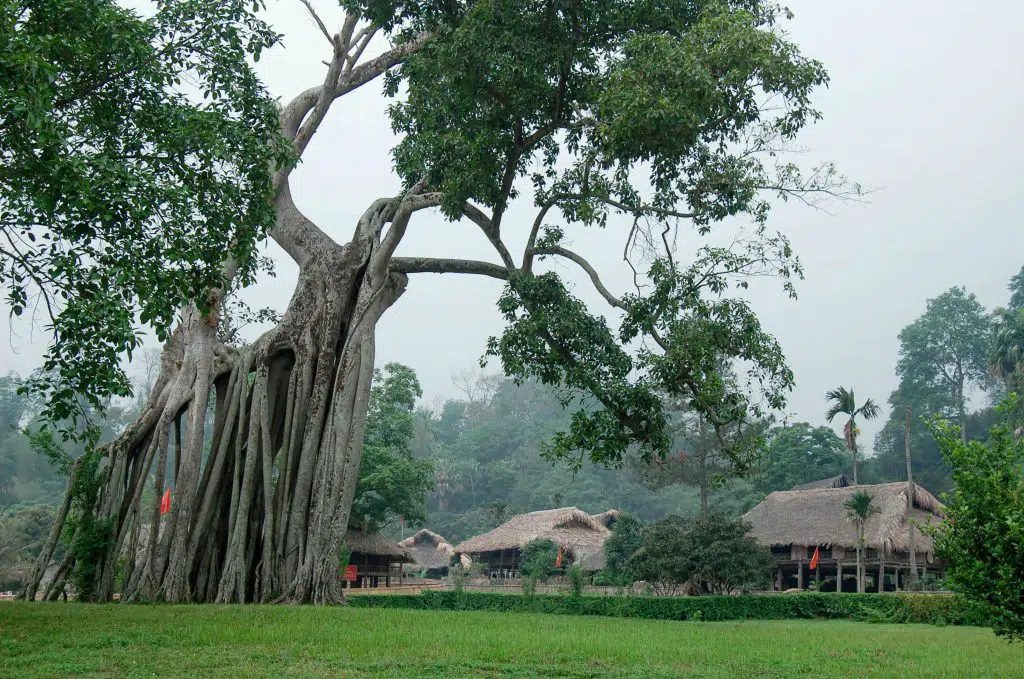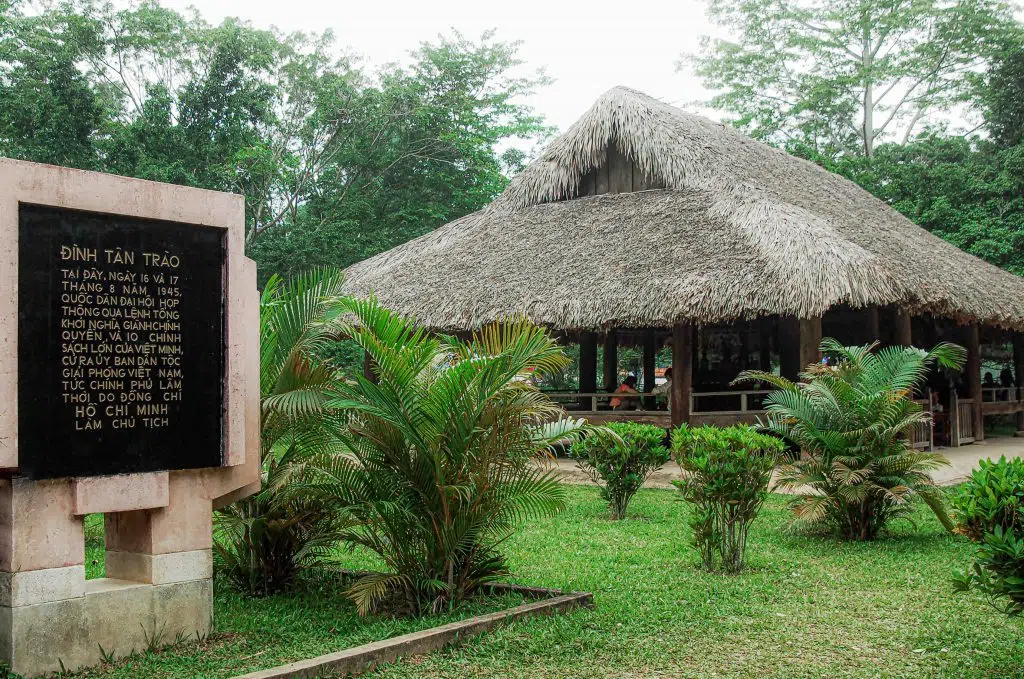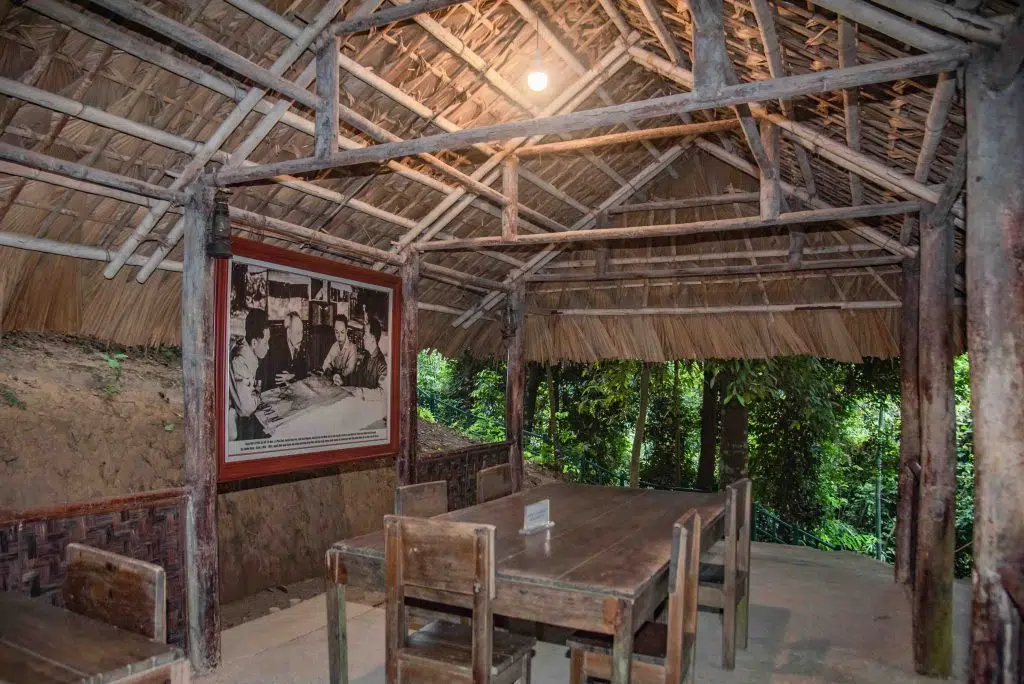Story: Ngo Quang Minh
Photos: Heritage Photo Tour – Thai Nguyen, Phu Duc, Amachau
With its heroic history, the former warzone of Viet Bac is deeply embedded in the hearts of the Vietnamese people.
Those unforgettable days and months of history live on in the timeless melodies of peaceful songs and the vibrant green of peace, reminding us of the countless places, people, and sacrifices that forged the free, independent, and prosperous Vietnam we know today.

As history unfolded, in addition to iconic places like the ancient citadel of Co Loa, the capital of Hoa Lu, and Dai La – Thang Long – now Hanoi, Vietnam also became known for a site with an unforgettable name: the “Capital of a Thousand Winds” This referred to the Viet Bac warzone, which served as the nation’s capital during the Resistance Era.
The Viet Bac warzone incorporated several old highland provinces: Cao Bang, Bac Kan, Lang Son, Ha Giang, Tuyen Quang, and Thai Nguyen. With revolutionary optimism, “Viet Bac – the Capital of a Thousand Winds” became the region’s nickname. Mr. Vu Ky (1921-2005), the devoted secretary of President Ho Chi Minh, described the name as “just a typical metaphor”. In the heart of the Viet Bac warzone lay the Safe Zone (ATK) – an area spanning the three former provinces of Tuyen Quang, Bac Kan, and Thai Nguyen. On July 1, 2025, this region became part of two new provinces: Tuyen Quang and Thai Nguyen.
Here, President Ho Chi Minh, the Party Central Committee, and the Government established the earliest and largest revolutionary base in preparation for the August Revolution of 1945. This base played a crucial role during the resistance against French colonialism and American imperial intervention (1946–1954). The area was chosen as the ATK (Safe Zone) due to its rugged terrain, a network of trails, and the Gam River, which ran along the outer perimeter, facilitating water transport.

The Tan Trao ATK was the nerve center and command hub for reclaiming national independence in the August General Uprising of 1945. The Na Lua Relic Cluster is a highlight of this site, where President Ho Chi Minh lived and worked from late May until August 22, 1945. Speaking of sites like the Dong Minh Hut, Na Lua Hut, Security Hut, Radio Hut, and the National Party Cadres Conference Hut, we still feel the echoes of historic decisions that shaped the country on the eve of national unification.
“The roof of Hong Thai Communal House and the banyan tree of Tan Trao” witnessed the National People’s Congress on August 16 and 17, 1945 – considered the second Dien Hong Conference of the nation. These sites also saw a ceremony to mark the departure of Viet Minh troops as they advanced toward Hanoi, launching the resistance war against France.
Spanning over 560 km² in two districts, Son Duong and Yen Son in Tuyen Quang Province, including 18 sites ranked as National Relics, the Tan Trao ATK is considered a “revolutionary museum”. Along with its “red” history, this is a “green” educational site, imbued with the spirit of national unity and patriotism.
The power of history is also felt in the Dinh Hoa ATK – a crucial site chosen as the headquarters of the Party Central Committee, the General Staff, and the Ministry of Defense. Here, President Ho Chi Minh and the highest leaders of the Party, Army, and Lien Viet Front (now the Vietnam Fatherland Front) lived and worked throughout the resistance period. Setting foot in Thai Nguyen, later generations cannot help but be moved when visiting Khau Ty Hill, Khuon Tat Village, Tin Keo Hut, De Pass, and Hong Mountain – legendary sites of historic victories.

The site’s peaceful, simple thatched-roof huts hold earth-shaking stories about historic decisions that shaped the fate of the entire nation. General Vo Nguyen Giap once affirmed the role of Dinh Hoa: “It was a totally secret ATK to ensure safety and stability so that the key leaders of the time could work with minimal disruption.”
Many important meetings were held here to plan key military campaigns, including the Winter–Spring Campaign and the world-renowned Dien Bien Phu Campaign, which shocked the world. Thai Nguyen also had the honor of witnessing the ceremony in which Vo Nguyen Giap was bestowed the title of General.With great emotion, President Ho Chi Minh declared, “I entrust you with the position of General so that you can lead the soldiers to fulfill the mission entrusted by the people!” General Nguyen Giap considered Thai Nguyen his “second homeland”. As well as being tied to his military career, this region was also the birthplace of his children – Vo Hoa Binh, Vo Hanh Phuc, and Vo Dien Bien.
From Hanoi’s historic Ba Dinh Square to the heart of the “resistance capital”, from the birth of a young nation to the steadfast years of struggle to defend it, through hardship endured with unshakable faith in the cause of freedom and independence, the Fatherland always remembers Viet Bac, the ATK, and the land and people of this heroic region.
While 80 years is not long in the thousand-year history of this nation, it marks a brilliant milestone for the entire country – a key foundation stone laid by earlier generations for their descendants to inherit and build upon in their prosperous and radiant homeland.










